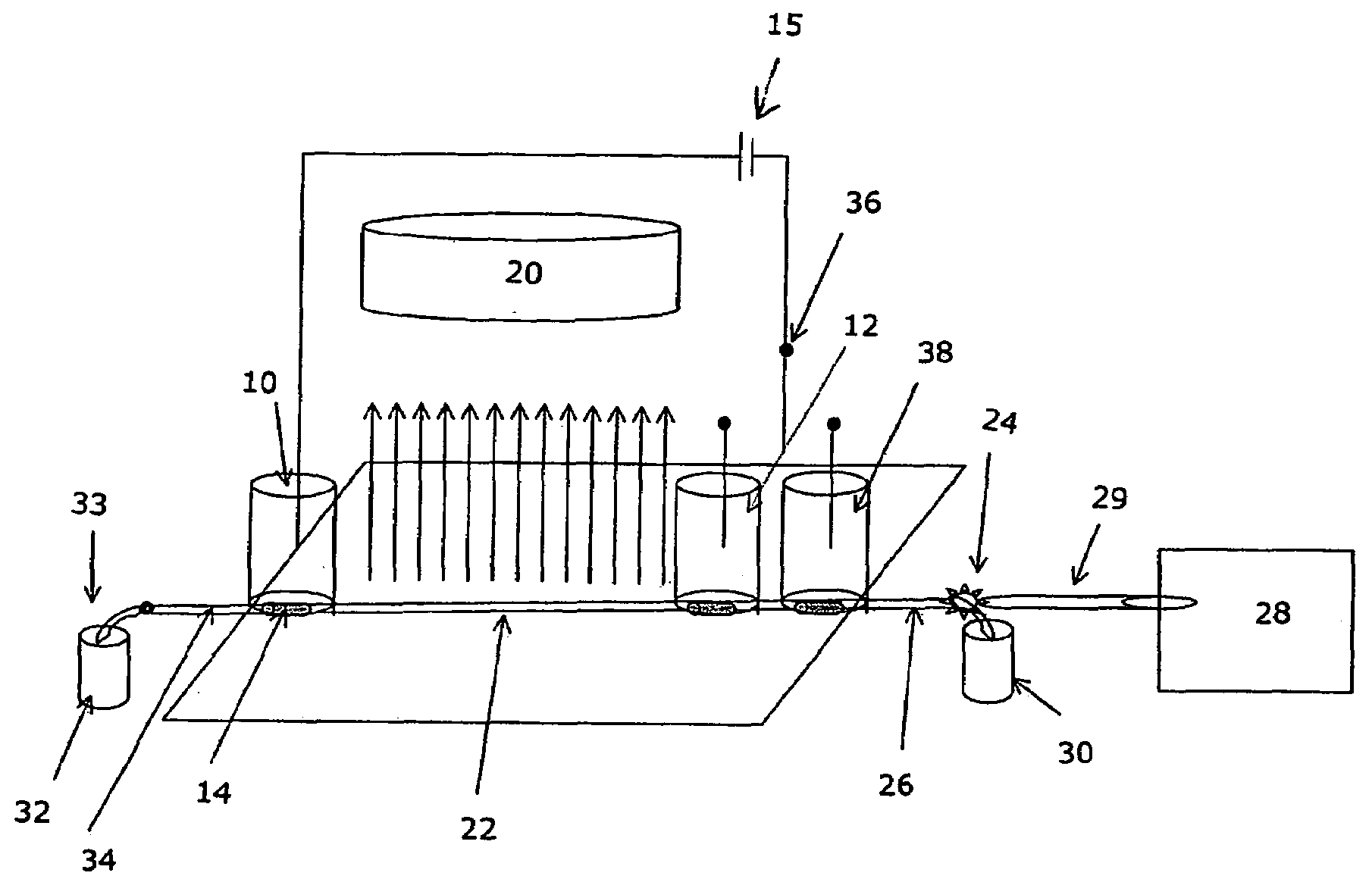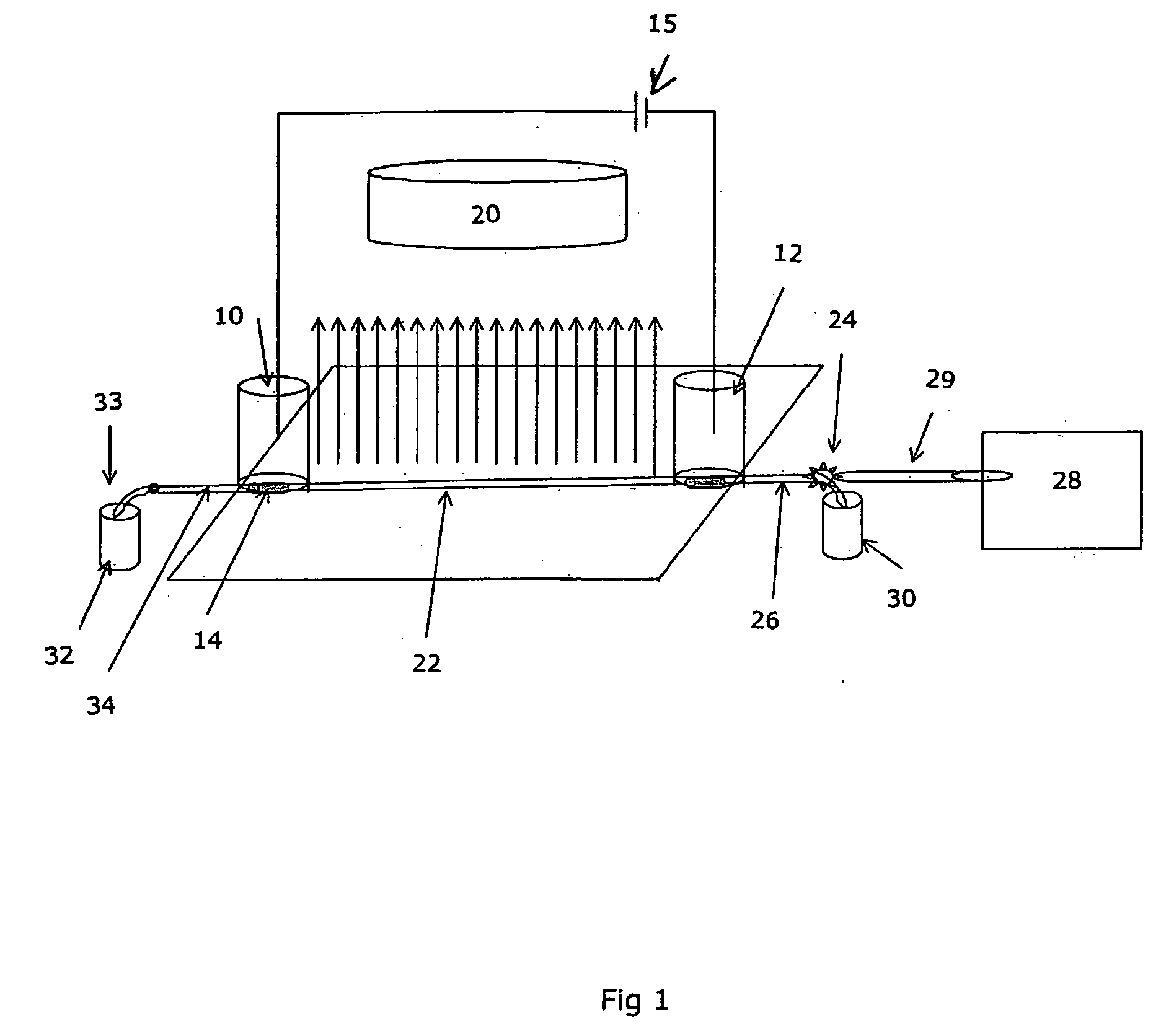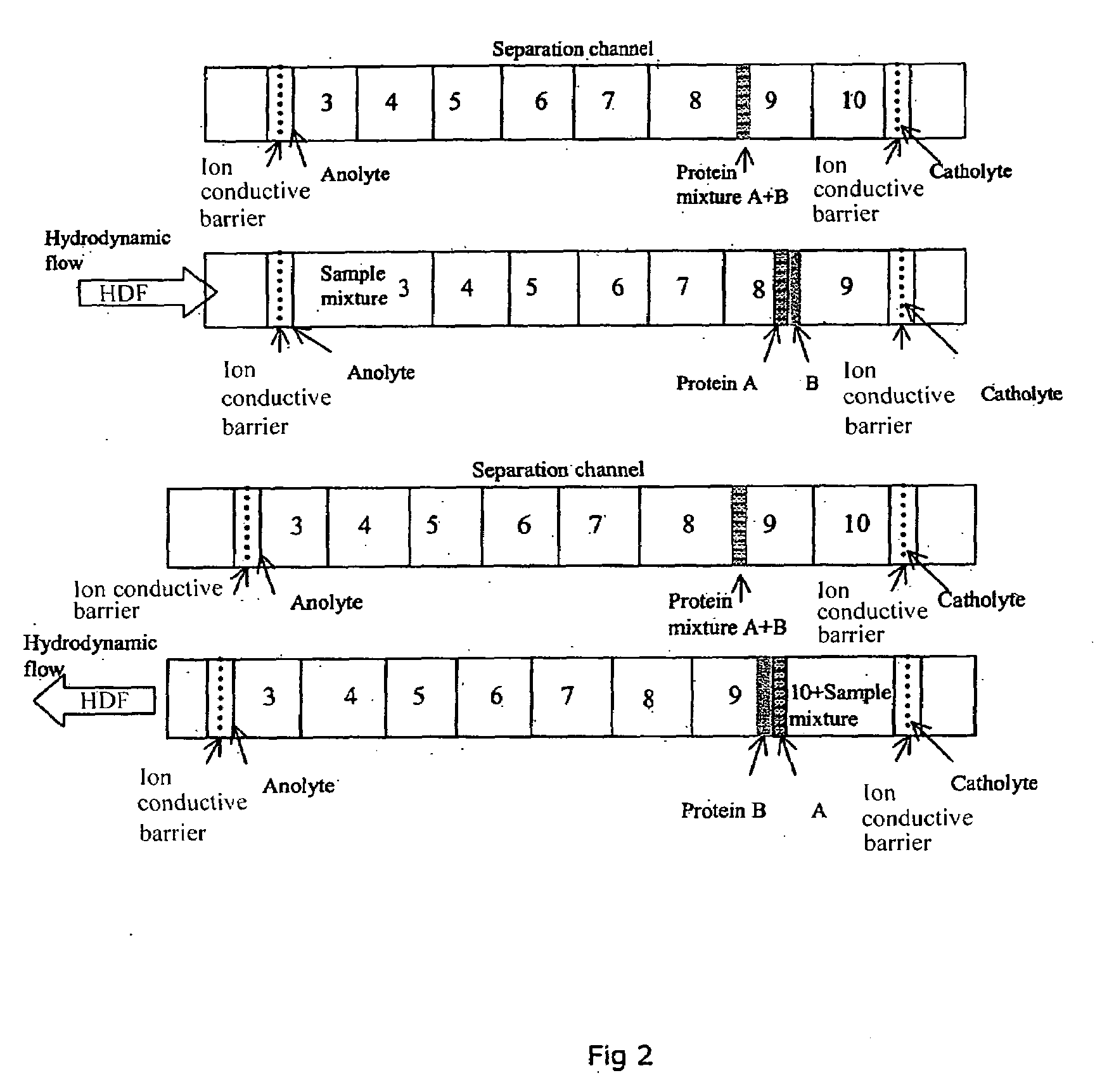Method and Apparatus to Perform Limited Two Dimensional Separation of Proteins and Other Biologicals
a technology of two-dimensional separation and proteins, applied in the direction of fluid pressure measurement, liquid/fluent solid measurement, peptide, etc., can solve the problems of time-consuming and non-quantitative, inability to automate the process nor quantify the resolved component proteins or other analytes, and the separation and ph gradient obtained in cief may be disturbed, so as to achieve superior separation resolution
- Summary
- Abstract
- Description
- Claims
- Application Information
AI Technical Summary
Benefits of technology
Problems solved by technology
Method used
Image
Examples
example 1
ydrodynamic Flow as Second Dimension of Separation
[0025]FIG. 5 illustrates hydrodynamic flow induced limited 2D separation of protein trypsinogen and a small molecular weight pI marker. In this experiment, trypsinogen and a small molecular pI marker were mixed with 8% pH 3-10 Pharmalyte and 0.35% methylcellulose. The sample mixture was injected into a 50 mm 100 μm inner diameter FC coated capillary with a micro autosampler. Focusing was conducted at a focusing voltage of 3000 V, with 80 mM H3PO4 as anolyte and 100 mM NaOH as catholyte. Detection was conducted with a real-time, whole column UV detector. The hydrodynamic flow is controlled by the water level difference in the hydrodynamic flow vial and the inlet vial.
[0026]It can be seen that when hydrodynamic flow was minimized (i.e. under first dimension cIEF separation conditions), there were two peaks in the electrophorogram (trace a). The more acidic peak to the left of the electrophorogram (egram) contains the minor component of...
example 2
Mobilization as Second Dimension of Separation
[0027]FIG. 6 illustrates chemical mobilization induced limited 2D separation of transferrin, myoglobin and a small molecular weight pI marker (pI 4.22). In this experiment, transferrin and myoglobin and the pI marker were mixed with 8% pH 3-10 Pharmalyte and 0.35% methylcellulose. The sample mixture was injected into a 50 mm 100 μm inner diameter FC coated capillary with a micro autosampler. Focusing was conducted at a focusing voltage of 3000 V, with 80 mM H3PO4 as anolyte and 100 mM NaOH as catholyte. Detection was conducted with a real-time, whole column UV detector. For anodic mobilization (trace b), the anolyte was replaced with 100 mM NaOH upon completion of cIEF focusing. For cathodic mobilization (trace c), the catholyte was replaced with 80 mM H3PO4 upon completion of focusing. In Trace a, it can be seen that when electroosmotic flow and hydrodynamic flow are well controlled (i.e. under first dimension cIEF separation conditions...
PUM
| Property | Measurement | Unit |
|---|---|---|
| amphoteric | aaaaa | aaaaa |
| column imaging | aaaaa | aaaaa |
| hydrodynamic pressure | aaaaa | aaaaa |
Abstract
Description
Claims
Application Information
 Login to View More
Login to View More - R&D
- Intellectual Property
- Life Sciences
- Materials
- Tech Scout
- Unparalleled Data Quality
- Higher Quality Content
- 60% Fewer Hallucinations
Browse by: Latest US Patents, China's latest patents, Technical Efficacy Thesaurus, Application Domain, Technology Topic, Popular Technical Reports.
© 2025 PatSnap. All rights reserved.Legal|Privacy policy|Modern Slavery Act Transparency Statement|Sitemap|About US| Contact US: help@patsnap.com



